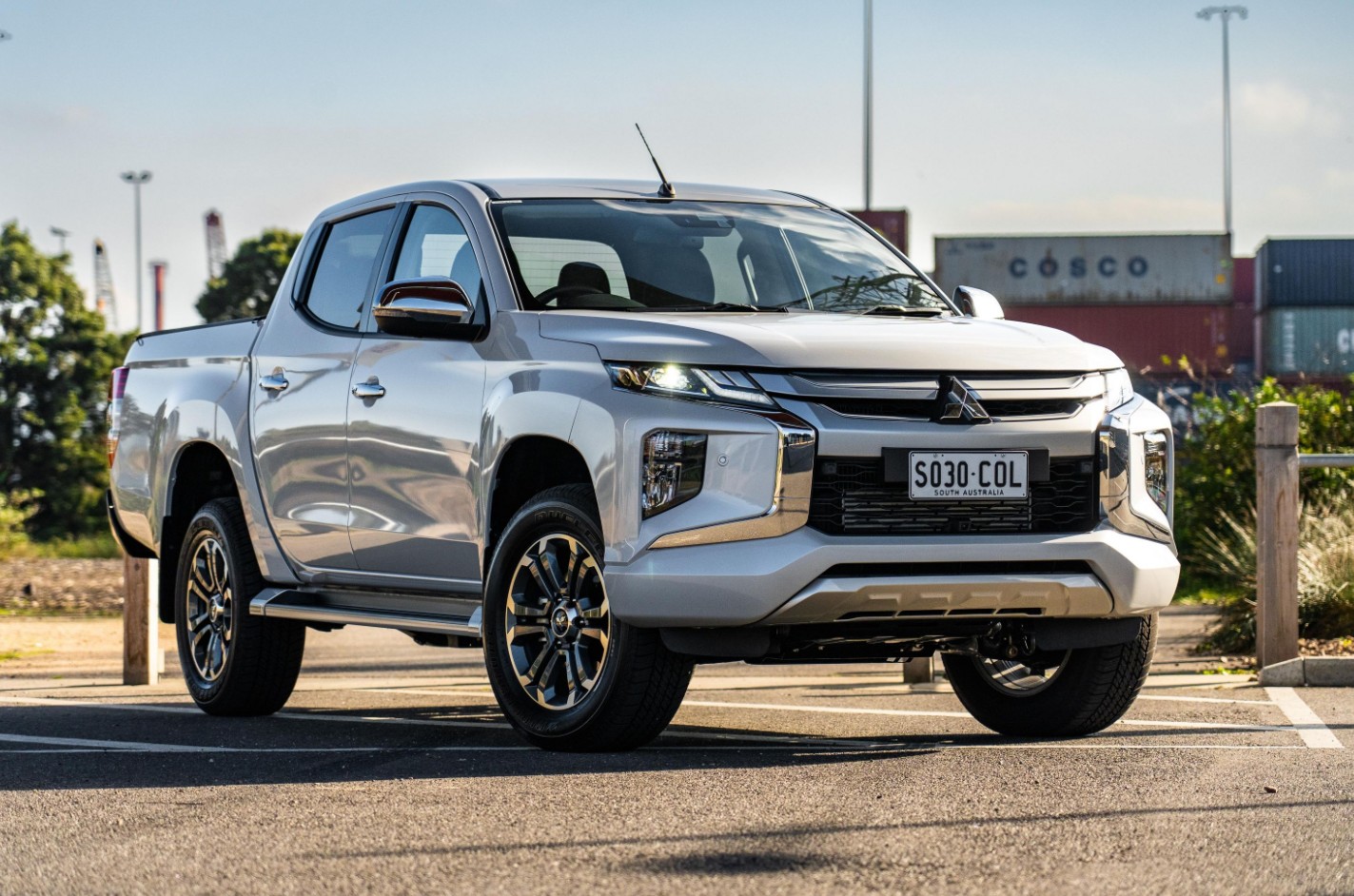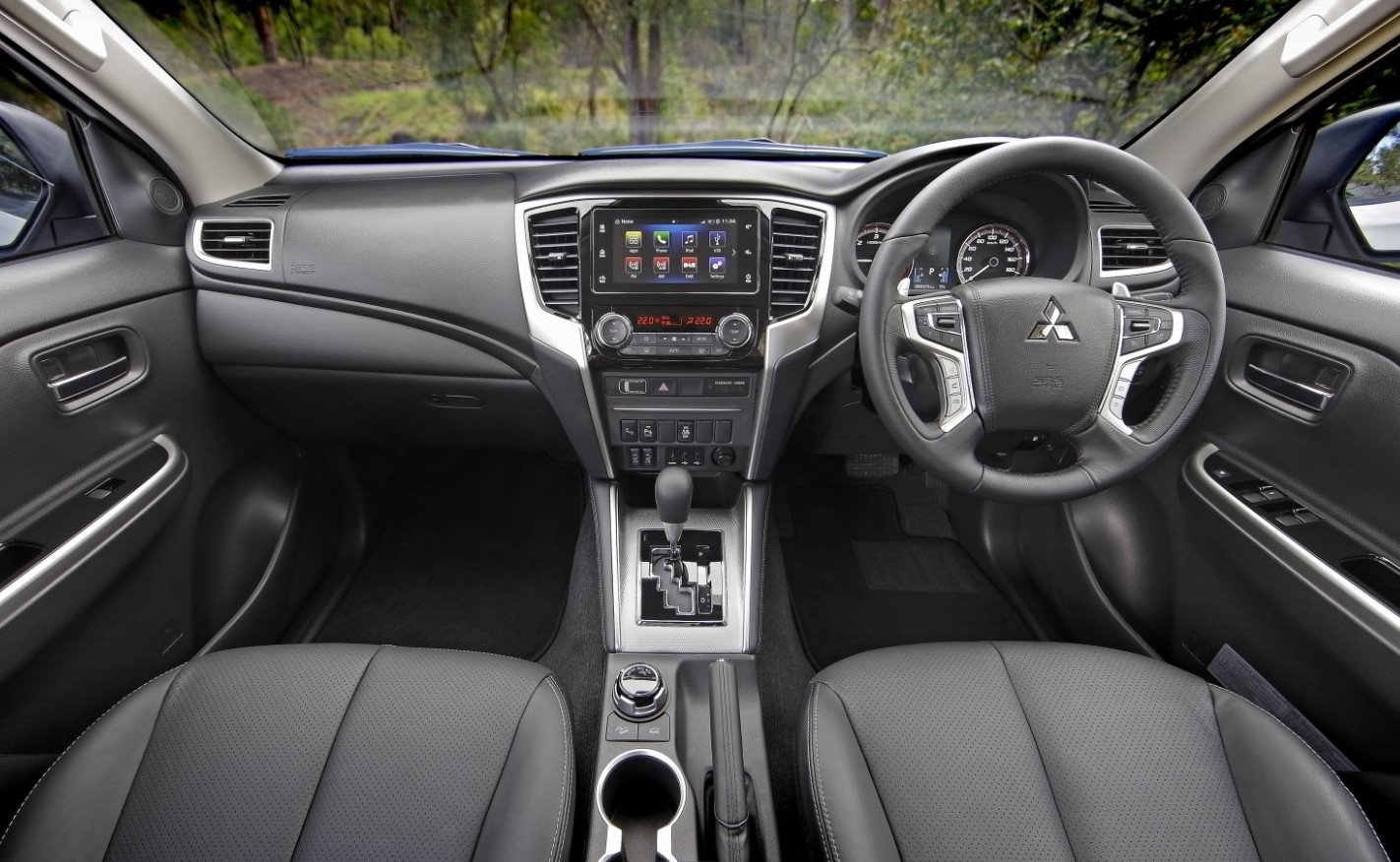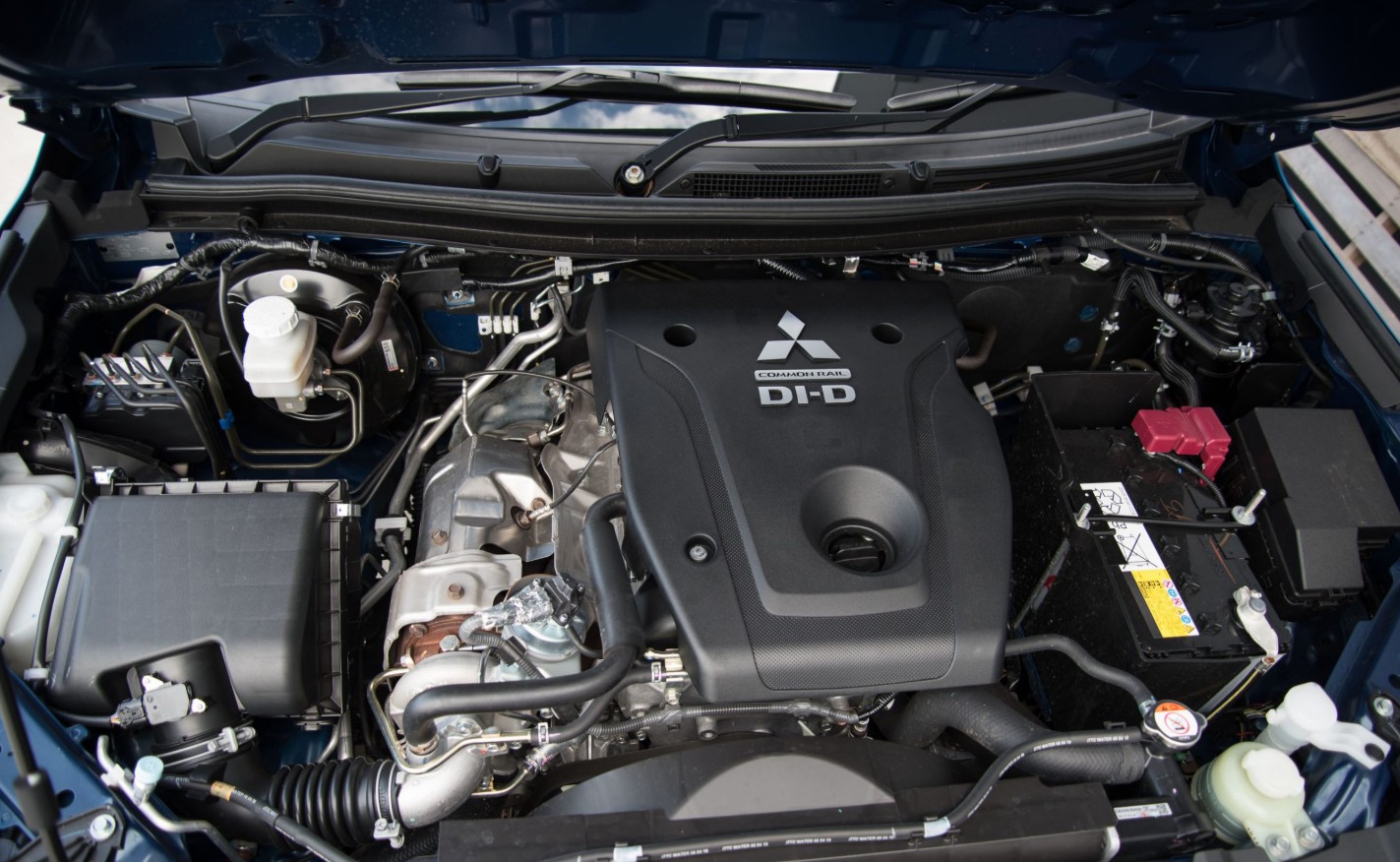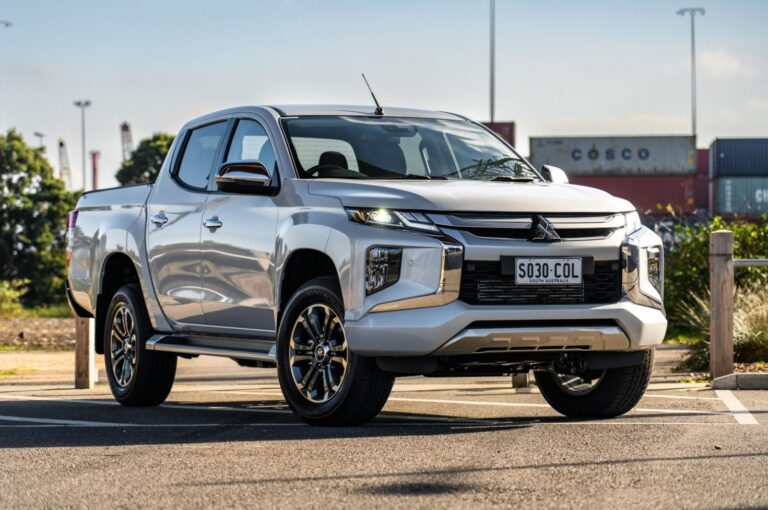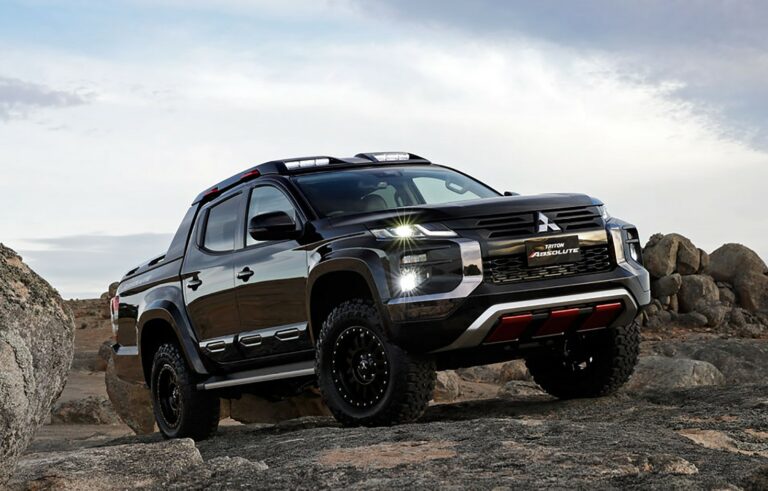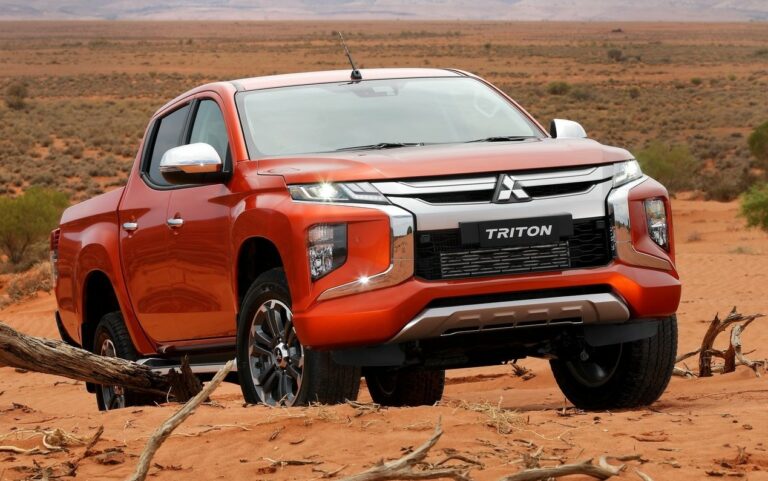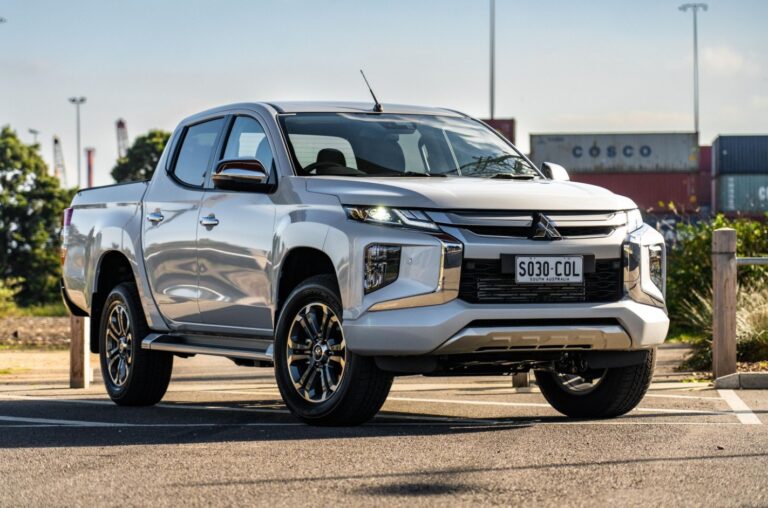New 2027 Mitsubishi Triton Review, Specs, Configurations
New 2027 Mitsubishi Triton Review, Specs, Configurations – Mitsubishi isn’t holding back with the 2027 Triton, delivering the most radical transformation in the model’s history. The entire platform has been overhauled, now sharing its underpinnings with the Nissan Navara thanks to the Renault-Nissan-Mitsubishi alliance.
The result is a larger, more imposing pickup with a wider track and longer wheelbase, improving both ride quality and off-road stance. The front fascia adopts the evolved Dynamic Shield design with a more squared-off grille, T-shaped LED headlights, and muscular bumper contours. Mitsubishi is clearly aiming for a stronger road presence, and the 2027 Triton wears that ambition confidently. New 2027 Mitsubishi Triton Review
New 2027 Mitsubishi Triton Redesign and Update Plan
Exterior & Interior
Inside, the 2027 Mitsubishi Triton feels like it belongs in a different class entirely. The utilitarian cabin of old has been replaced with a sleek, intuitive layout designed for comfort and modern connectivity. A massive 12.3-inch digital instrument cluster now comes standard across most trims, paired with a 13-inch floating touchscreen infotainment system that includes wireless Apple CarPlay and Android Auto. Voice control, over-the-air updates, and Mitsubishi Connect telematics all come standard, turning the Triton into a smart, connected cockpit.
Interior materials have seen a significant upgrade. Soft-touch surfaces, contrast stitching, and satin chrome accents elevate the ambiance. Double-cab models offer more rear legroom thanks to the extended wheelbase, and new seat designs provide better support for long drives. Higher-spec models come with leather upholstery, heated and ventilated front seats, dual-zone climate control, and a 360-degree camera view displayed on the center screen. Mitsubishi clearly wants drivers to feel like they’re in a premium SUV—not a work truck.
Storage and practicality haven’t been sacrificed. The center console is larger, with wireless charging and multiple USB-C ports. Door bins are deeper, the glove box is now cooled, and the rear seats can fold up to expand storage for tools or equipment. A new acoustic windshield and improved insulation reduce NVH, making highway cruising far more refined than any Triton before it. Whether you’re commuting, towing, or tackling a trail, the new interior brings comfort and functionality into perfect balance.
The body features bolder lines and flared fenders that hint at serious off-road credentials. Higher trims offer integrated skid plates, blacked-out side mirrors, and a tougher bed design with upgraded tie-down points. LED lighting wraps around the vehicle—including the new “boomerang” daytime running lights—offering visibility and flair. Wheel options now range up to 20 inches, depending on the trim, with all-terrain rubber available on off-road focused variants. The Triton looks less like a traditional utility vehicle and more like a lifestyle truck that doesn’t shy away from rough terrain.
Even aerodynamics weren’t ignored. Active grille shutters and a redesigned tailgate spoiler help reduce drag, improving both performance and fuel efficiency. Mitsubishi has reengineered the hood and side mirrors to streamline airflow, reducing wind noise and improving high-speed stability. It’s not just a cosmetic makeover—the entire silhouette has been fine-tuned to reflect modern pickup trends while staying true to the Triton’s rugged DNA. New 2027 Mitsubishi Triton Review
New 2027 Mitsubishi Triton Specs
Engine & Performance
The biggest headline under the bonnet of the 2027 Triton is the introduction of a 2.4-liter twin-turbo diesel engine, paired with a 48V mild-hybrid system on select trims. This setup generates 201 horsepower and a robust 470 Nm of torque, mated to a new 8-speed automatic transmission. The mild-hybrid setup enhances acceleration and fuel economy while providing smoother engine idle and start-stop functionality. For those seeking more sustainability, Mitsubishi is also preparing a plug-in hybrid variant for late 2027, though official specs are yet to be revealed.
Mitsubishi’s legendary Super Select 4WD-II system has also been upgraded. It now includes seven selectable terrain modes—Normal, Gravel, Snow, Mud, Sand, Rock, and Tow—giving drivers maximum control in diverse conditions. Locking rear differentials, low-range gearing, and hill descent control come standard on most 4WD trims, making the 2027 Triton one of the most capable pickups in its class. Payload capacity reaches up to 1,050 kg, and towing capability is rated at 3,500 kg—matching key rivals like the Ford Ranger and Toyota Hilux.
On-road performance has seen improvements too. Revised suspension geometry improves cornering stability and ride comfort, particularly when the bed is unloaded. The Triton’s steering is more direct, thanks to a new rack-assisted electronic system, while braking performance gets a boost from larger front discs and upgraded ABS calibration. Whether it’s a workhorse or an off-road toy you’re after, the new Triton delivers a more dynamic and composed drive than any of its predecessors.
New 2027 Mitsubishi Triton Fuel Economy
Fuel economy sees notable gains across the new Triton lineup, especially with the introduction of mild-hybrid tech. The diesel mild-hybrid models are expected to return a combined figure of around 7.0L/100km (33.6 mpg), while traditional diesel trims remain close behind at 7.8L/100km (30.1 mpg). The upcoming PHEV variant is projected to deliver around 50 km (31 miles) of electric-only range, ideal for urban users looking to reduce fuel costs and emissions. An Eco Mode, regenerative braking, and aerodynamic tweaks further enhance the Triton’s efficiency profile.
New 2027 Mitsubishi Triton Safety Features
Mitsubishi has fully embraced active safety with the 2027 Triton, packing in a suite of features that now come standard across most trims. Forward Collision Mitigation with pedestrian and cyclist detection, Blind Spot Warning, Rear Cross Traffic Alert, and Adaptive Cruise Control with Stop & Go are just the start. Lane Departure Prevention and a Driver Attention Alert system also make their way into the standard equipment list, making daily driving safer and more reassuring.
An all-new Multi-View Monitor provides a full 360-degree view around the vehicle, supported by ultrasonic sensors and cameras with object detection. The system is especially useful during tight parking or low-speed trail driving, where visibility is crucial. Automatic High Beam, Traffic Sign Recognition, and an upgraded front radar with longer-range detection round out the advanced safety suite. Mitsubishi has clearly designed the Triton to not just survive tough conditions, but to prevent accidents before they happen.
Structurally, the 2027 Triton features Mitsubishi’s Reinforced Impact Safety Evolution (RISE) body, which incorporates more high-strength steel and enhanced side-impact protection. A new airbag layout includes knee airbags and side curtains that extend to the rear. For families using the Triton as a dual-purpose vehicle, child-seat anchoring points and rear seatbelt reminders have been improved. With a goal to meet the highest ANCAP and Euro NCAP scores, Mitsubishi is ensuring safety isn’t an afterthought—it’s the foundation. New 2027 Mitsubishi Triton Review
New 2027 Mitsubishi Triton Release Date & Price
Pricing for the 2027 Mitsubishi Triton is expected to remain competitive, starting from approximately $36,000 USD for the entry-level 2WD diesel. Mid-tier 4WD trims equipped with Super Select 4WD-II and advanced safety tech will range from $42,000 to $47,000. The fully-loaded Exceed or Athlete variants, complete with leather interior, hybrid tech, and off-road enhancements, may approach the $52,000 mark. Mitsubishi aims to undercut key competitors without compromising on quality or capability.
The global rollout begins with a full reveal in Q4 2026, followed by sales starting in early 2027 in Australia, Thailand, and New Zealand—markets where the Triton has built a strong legacy. Other regions, including South Africa, Latin America, and select parts of Europe, will follow in mid-2027. Mitsubishi has also hinted at a U.S. release under the Nissan brand umbrella, though this remains unconfirmed. Regardless of region, demand is expected to be high, and dealerships are already preparing for significant interest.
